10 metro areas with growing real estate markets
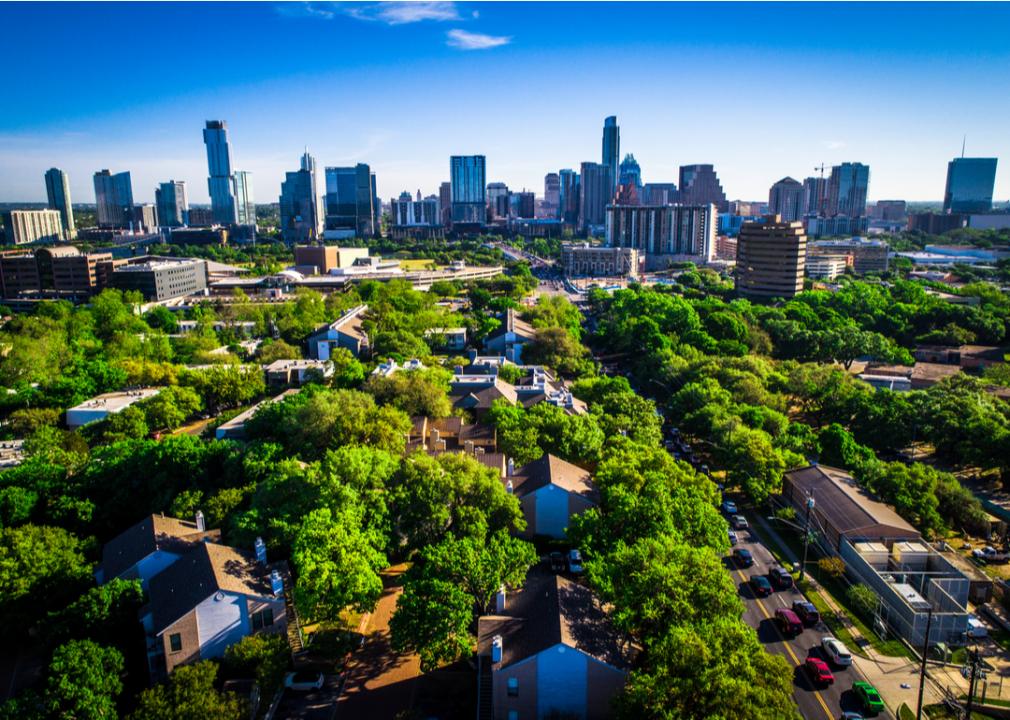
Roschetzky Photography // Shutterstock
10 metro areas with growing real estate markets
Bidding wars. Over-asking offers. Cash buyers. Eager investors. Inventory shortages. If there’s one part of the economy that has been completely upended by the pandemic, it’s the housing market.
Cities like San Francisco and New York have always been well out of reach for the average homebuyer. As tech and business hubs, these cities are a big draw for high earners attracted to the employment opportunities and unique lifestyles these places can offer. In turn, housing inventory has always been limited in these cities, pushing the prices to a premium. Even before the COVID-19 pandemic, it wasn’t unusual for home prices in the more desirable parts of New York City to start at the million- or multimillion-dollar mark, making them well out of reach for most people.
But while real estate markets in cities like these have always been relatively inaccessible to low- and moderate-income buyers, there were other markets across the nation where homes were affordable before the pandemic took hold. Homes in cities like Cleveland, Ohio, or Boise, Idaho, were still well within the realm of possibility for low- and moderate-income buyers—as were homes in many rural or suburban areas.
That all changed when the pandemic buying frenzy took hold, though. As investors and buyers swarmed markets across the nation, home prices began to skyrocket, and housing shortages became commonplace. During the height of the buying frenzy, it was hardly surprising to hear that average home prices in a rural Tennessee town or a small Texas suburb had doubled—adding yet another affordability hurdle for buyers.
While demand has since begun to cool off in some markets, that’s certainly not the case for every market. Many metro areas across the nation are still seeing rampant real estate market growth—even as mortgage rates start to slowly tick upward. But what metro areas have seen the most real estate growth over the past six months—and what exactly is driving it?
Fund That Flip analyzed data from Zillow and the Bureau of Labor Statistics to determine 10 metros where real estate markets have been growing. While there is not an exact formula to rank real estate market growth, there are several factors homebuyers, sellers, and investors look at to determine the health of a housing market. These factors include growing home values; a high sale-to-list ratio, which is when the sales price of a home is close to the initial listing price for it; how fast homes are being sold; and economic factors such as business growth and unemployment rates.
For this story, Fund That Flip listed 10 cities that show healthy metrics for six-month growth in home values at 10% or higher, a high sale-to-list ratio at 85% or higher, and a low unemployment rate at under 5%. Additional statistics on housing inventory and the median days a house is on the market until its sale is pending are also included. All data is from September 2021, the most recent data available.
![]()
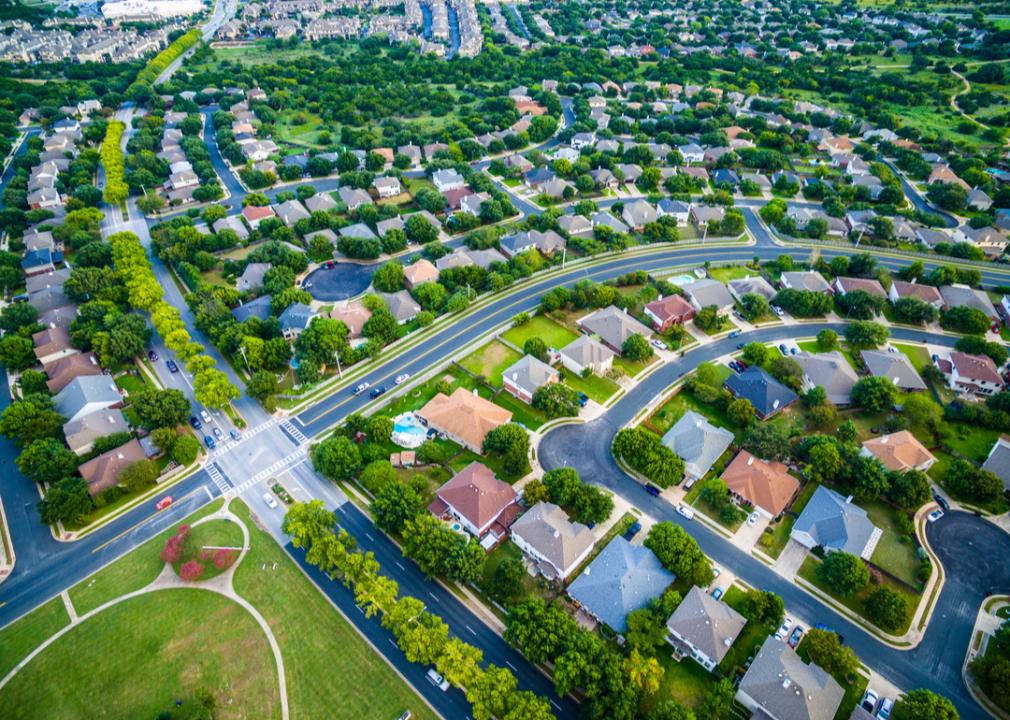
Roschetzky Photography // Shutterstock
Austin, Texas
– Home value index in September 2021: $520,898 (20.6% six-month growth)
– Home value index in April 2021: $431,752
– Housing inventory: 9,691
– Sale-to-list ratio: 91%
— Median listing price: $527,277
— Median sale price: $479,566
– Median days until sale is pending: 17
– Unemployment rate: 3.5%
Texas’ capital city of Austin has been growing significantly over the past couple of decades, and the pandemic has only helped to further propel that growth—both in population and in the housing market. As tech businesses fled the Bay Area during the pandemic, Austin became a hot landing spot for the tech migration. That, coupled with an extremely strong employment market, has helped lure in flocks of house-hunting new employees, who have snatched up homes in the Austin metro area and helped home values grow significantly throughout the last half of the year.
According to the San Francisco Chronicle’s recent analysis, the net inflow of tech employees to the city of Austin was the highest in the nation. Other factors, like a crushing demand for housing to purchase during the pandemic and high rates of new out-of-state residents moving to Austin, have also played a large part in the housing market explosion in this city.
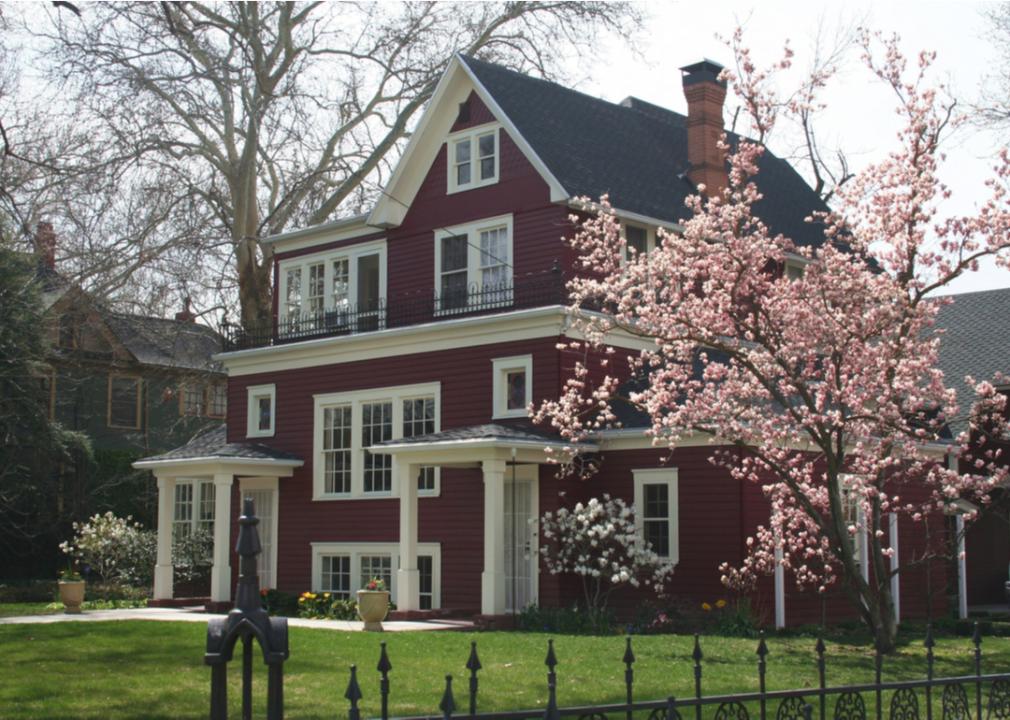
Joy Prescott // Shutterstock
Boise City, Idaho
– Home value index in September 2021: $502,580 (15.6% six-month growth)
– Housing inventory: 3,637
– Sale-to-list ratio: 86.4%
— Median listing price: $543,660
— Median sale price: $469,961
– Median days until sale is pending: 11
– Unemployment rate: 2.2%
The job market in Boise City, Idaho, took a hit at the start of the pandemic, but it came roaring back over the past year. As with the rest of Idaho, the job market in this city, which is part of the Boise metro area, has continued to rebound faster than nearly anywhere else in the nation. With a thriving job market comes new residents, and the influx of new workers to the Boise City area has helped land this city on the #3 spot in the nation for inward migration.
Other factors, like an influx of new residents to the Boise area from California, also helped the population to boom, and in turn, the housing market was stretched to its limits. Add in the pandemic buying frenzy that was fueled by low interest rates and a slew of new investors, and it was the perfect recipe for a Boise City housing crunch—and swiftly growing home values and prices in the area.
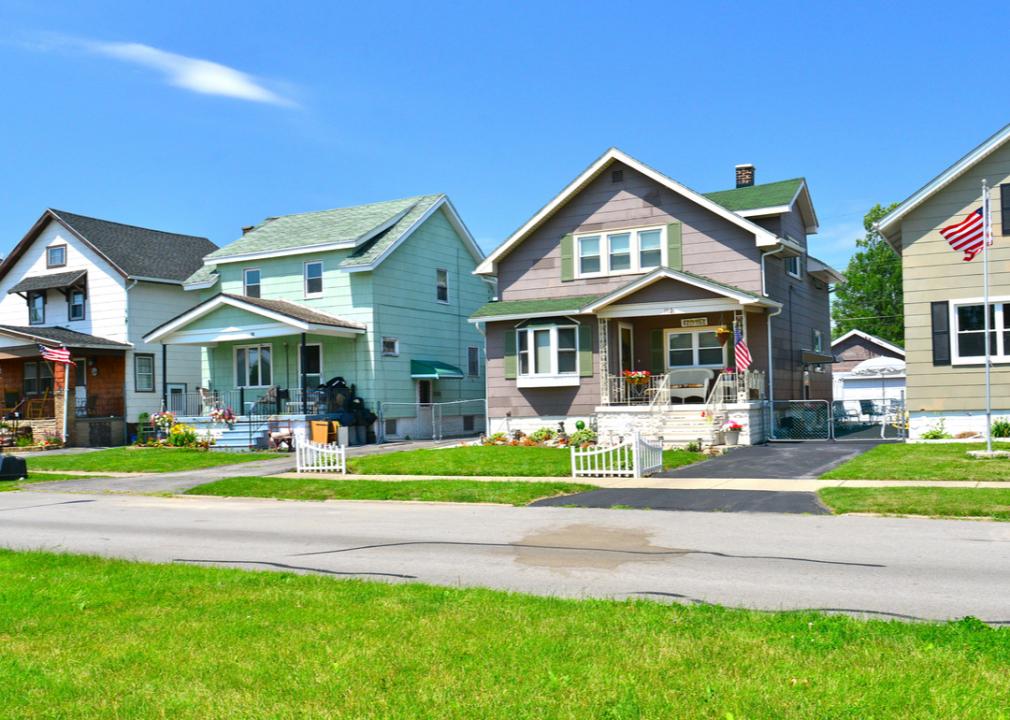
Richard Cavalleri // Shutterstock
Buffalo, New York
– Home value index in September 2021: $225,838 (10.9% six-month growth)
– Housing inventory: 2,478
– Sale-to-list ratio: 88.7%
— Median listing price: $233,233
— Median sale price: $206,775
– Median days until sale is pending: 11
– Unemployment rate: 4.7%
There has been staggering population growth for the upstate city of Buffalo, New York, over the past decade—so much so that the most recent Census data showed Buffalo’s population growth was well ahead of other upstate New York cities. But while the population boom in Buffalo has likely contributed to the competitive real estate market, what really sent the housing market into overdrive was the pandemic.
As local and out-of-state buyers flocked to Buffalo for affordable homes and investment properties, it put a strain on the housing market, causing prices to climb in tandem. The housing supply in Buffalo couldn’t keep up with the uptick in demand from new residents or the current residents looking to purchase properties, leading to serious competition for the available inventory. This drove housing prices up and led to buyers offering other incentives, like extremely quick closings on properties—which has continued to be status quo over the past half-year.

Trong Nguyen // Shutterstock
Dallas-Fort Worth, Texas
– Home value index in September 2021: $326,597 (12.7% six-month growth)
– Housing inventory: 24,499
– Sale-to-list ratio: 88.5%
— Median listing price: $395,842
— Median sale price: $350,262
– Median days until sale is pending: 17
– Unemployment rate: 4.4%
The thriving Dallas-Fort Worth metro area job market is ranked as the top job market in the nation, and it’s due in no small part to a recent growth in high-paying tech and finance jobs in the Texas metro. The thriving job market in the Dallas-Fort Worth area has led to an ongoing population boom, with new residents snatching up housing as they move to the area for jobs and opportunities. Even more new residents flooded into the Dallas area during the pandemic, causing further growth in population.
As with the rest of the nation, the demand for housing inventory here was extremely high throughout the early parts of the pandemic, which caused a housing shortage in the area—and it has continued ever since. With a lack of inventory and a slew of new residents comes a swift uptick in home values and prices, and in the past six months, this is precisely what has happened in Dallas-Fort Worth.
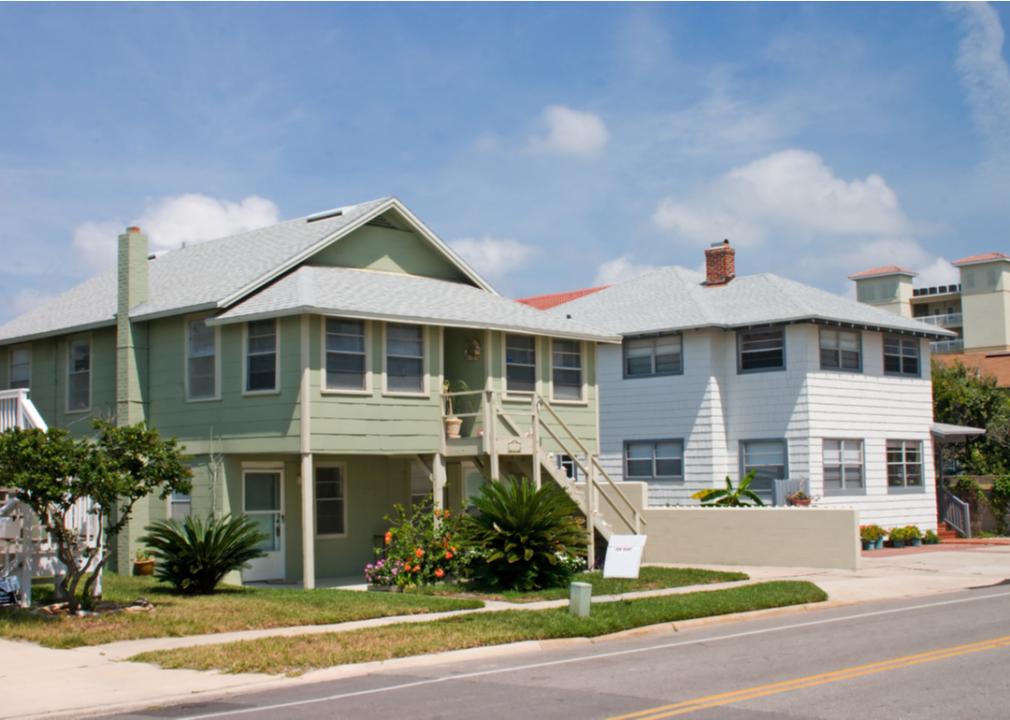
L Barnwell // Shutterstock
Jacksonville, Florida
– Home value index in September 2021: $301,415 (12.6% six-month growth)
– Housing inventory: 7,015
– Sale-to-list ratio: 86.4%
— Median listing price: $353,463
— Median sale price: $305,428
– Median days until sale is pending: 12
– Unemployment rate: 3.7%
The housing market in Jacksonville, Florida, has been extremely competitive since the start of the pandemic, as buyers and investors of all types have rushed to purchase homes at extremely low rates. This, in turn, has caused a housing shortage, leading to rapidly rising housing prices and very low inventory in the area.
There have also been a bunch of new residents added to Jacksonville over the past year, many of whom are moving to the area for jobs with companies like Boeing and Amazon. This swift—and ongoing—uptick in population has only added to the issue, making housing extremely competitive in Jacksonville. In turn, prices have been driven up and buyers are pushing to close on their purchases in just a matter of days as an added incentive for sellers.

Thad Bridwell // Shutterstock
Phoenix, Arizona
– Home value index in September 2021: $410,028 (15.2% six-month growth)
– Housing inventory: 19,157
– Sale-to-list ratio: 85.3%
— Median listing price: $471,748
— Median sale price: $402,496
– Median days until sale is pending: 14
– Unemployment rate: 3.8%
Throughout the pandemic, the housing market in Phoenix has been extremely competitive, with demand from buyers far outweighing supply. The sudden uptick in demand started the home prices on an upward trend early in the pandemic. The existing housing supply has since been depleted, and the new construction in Phoenix can’t keep up with demand, which has allowed housing prices to continue their significant growth over the past six months.
Phoenix has also been one of the top cities for population growth, with throngs of newcomers drawn to the area for employment opportunities in industries like tech, finance, aerospace, cybersecurity, e-commerce, and health care. This ongoing population boom has further helped fuel massive growth within the housing market over the past few months—and will likely continue in the near future.
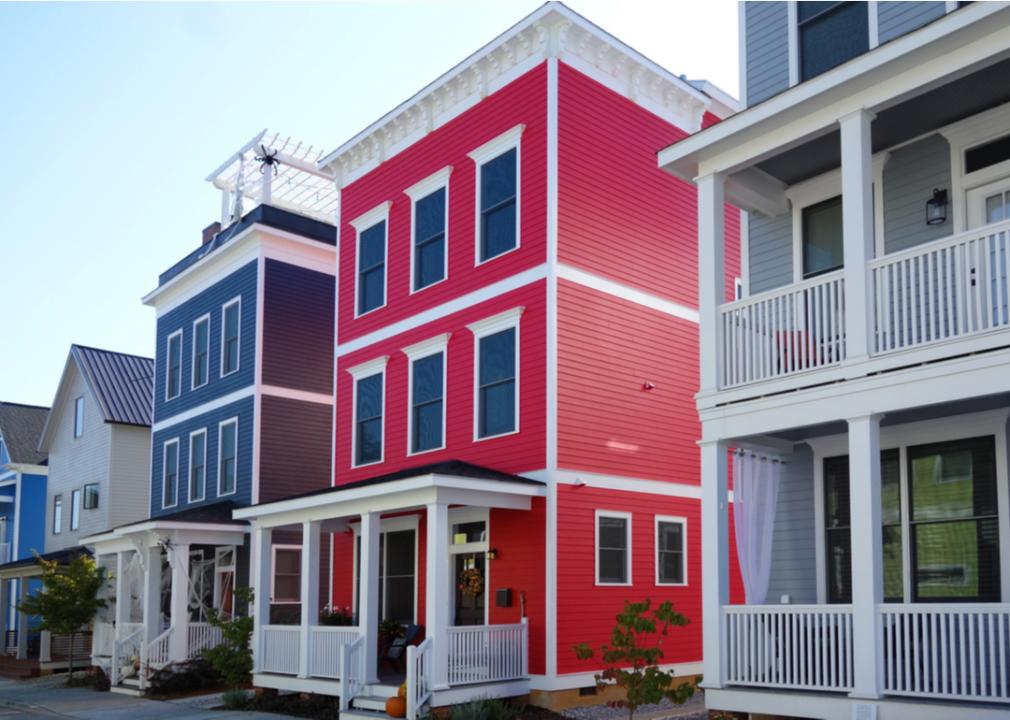
zimmytws // Shutterstock
Raleigh, North Carolina
– Home value index in September 2021: $374,649 (15% six-month growth)
– Housing inventory: 3,395
– Sale-to-list ratio: 86%
— Median listing price: $428,361
— Median sale price: $368,558
– Median days until sale is pending: 5
– Unemployment rate: 3.1%
Raleigh, North Carolina, has a thriving—and growing—job market filled with numerous industries and big-name companies—IBM, Cisco, GlaxoSmithKline, and Fidelity Investments, to name a few. This has kept new residents flowing into the area and helped drive demand for housing. With demand comes rising home prices and buyer incentives, like cash offers and very quick closings—all of which have been common in Raleigh over the past few months.
The increased demand for housing inventory that started early in the pandemic has not yet slowed down in Raleigh. Bidding wars are still common there, with buyers competing for the available homes in the area. This has helped push home prices in Raleigh even higher in the last six months, all while inventory has remained low.

Levent Konuk // Shutterstock
San Francisco, California
– Home value index in September 2021: $1,341,085 (10.5% six-month growth)
– Housing inventory: 8,830
– Sale-to-list ratio: 108.7%
— Median listing price: $931,333
— Median sale price: $1,012,819
– Median days until sale is pending: 12
– Unemployment rate: 4.7%
While home prices in other areas skyrocketed early in the pandemic, the pricey San Francisco market was slower to catch on. Thanks to a widespread shift to remote work, many residents opted to move from San Francisco to less expensive areas, which allowed home sales to stagnate temporarily in the area. That is no longer the case, however, as the San Francisco housing market is now as competitive as ever, with inventory shortages and bidding wars causing prices to climb higher and higher.
The employment market, which has been dealing with a pandemic-related tech exodus, is thriving again, too—making huge job gains over the last few months. What that means in terms of housing is that there are more qualified buyers and more new residents to contend with, which helps fuel rising prices by furthering the demand for housing in San Francisco.

Sundry Photography // Shutterstock
San Jose, California
– Home value index in September 2021: $1,477,055 (11.3% six-month growth)
– Housing inventory: 3,029
– Sale-to-list ratio: 103.6%
— Median listing price: $1,249,333
— Median sale price: $1,294,603
– Median days until sale is pending: 11
– Unemployment rate: 4%
The housing market in San Jose, California, has been extremely competitive since the start of the pandemic, and there are no signs of it slowing in the near future. Located near San Francisco, San Jose has had an influx of buyers competing for limited housing inventory throughout the last half-year, which has driven up prices substantially in the area.
Much of this demand stems from tech industry employees, who have been forced to turn to more suburban areas like San Jose for housing after encountering issues with high prices and low inventory in San Francisco. Investors have also flocked to San Jose in recent months, further depleting the limited housing supply and forcing up prices in the area. Per recent data, investors have driven about 13.8% of home purchases in the San Jose area, with a median sale price of $1.68 million.
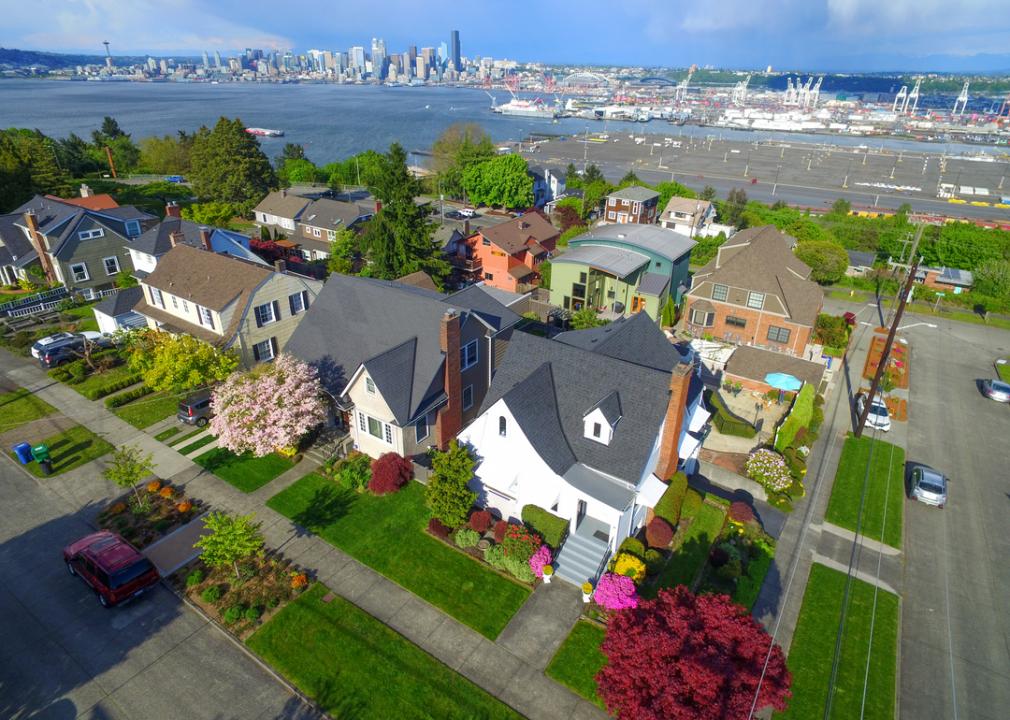
Artazum // Shutterstock
Seattle, Washington
– Home value index in September 2021: $687,363 (10.8% six-month growth)
– Housing inventory: 10,814
– Sale-to-list ratio: 93.8%
— Median listing price: $689,817
— Median sale price: $647,163
– Median days until sale is pending: 9
– Unemployment rate: 4.4%
Seattle is experiencing an ongoing population boom, with swaths of new residents moving to the area for opportunities in the city’s thriving employment market. This has caused the housing market in the area to be extremely competitive—and the pandemic buying spree hasn’t helped things, either. Neither have the high numbers of investors who have been attracted to Seattle due to the high home appreciation rates.
The demand has put a strain on the limited housing inventory in Seattle, and for-sale inventory is now at historic lows in this city. Buyers of all types are now forced to compete by offering over-asking prices and other incentives, which has caused home prices to steadily rise over the past six months. It’s a trend that continues to this day, even as the Seattle market slightly cools.
This story originally appeared on Fund That Flip
and was produced and distributed in partnership with Stacker Studio.
